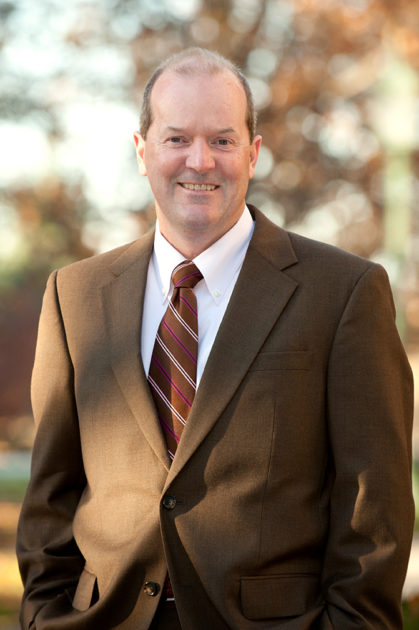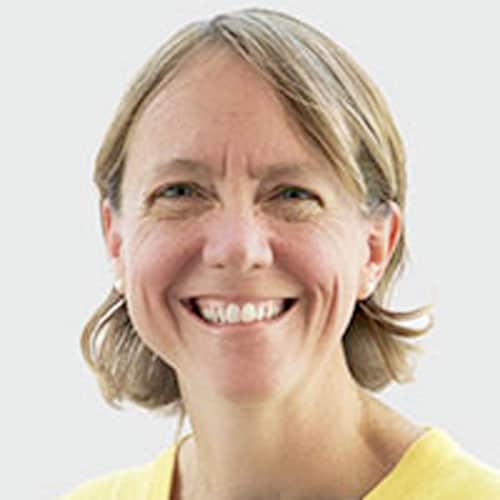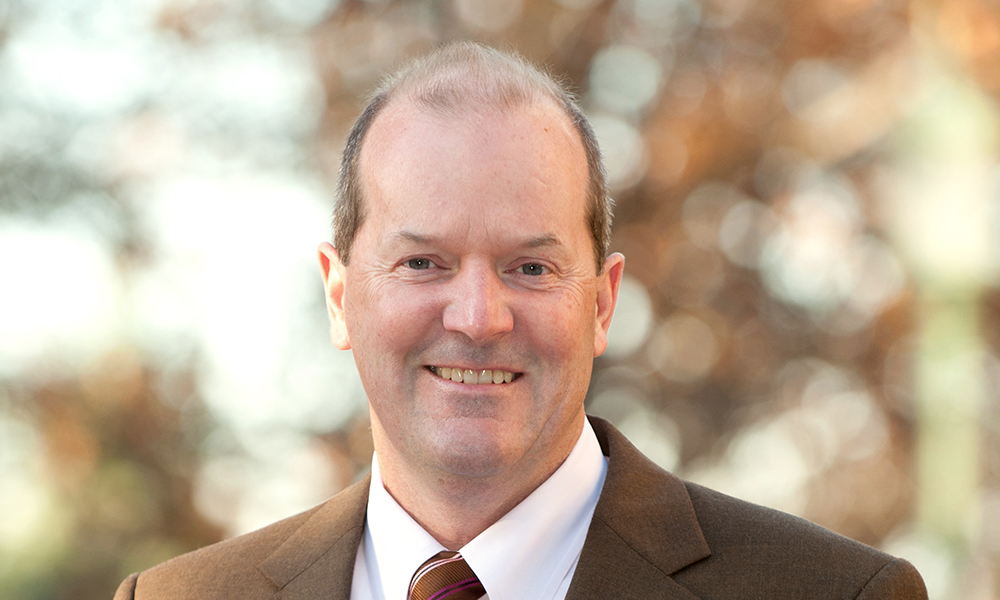Over a quarter century at Rochester, Lewis outlined information technology’s strategic role at the University.

Dave Lewis, who led the University of Rochester’s information technology operations for nearly two decades, has announced that he plans to step down from his leadership roles at the end of June.
Lewis, the University’s vice president for information technology and chief information officer, joined the University in 1997 and became part of the President’s Cabinet in 2006, when he was named CIO.
Since then, Lewis has played a key role in establishing University-wide technology governance structures and operations that better support Rochester’s strategic missions as a research university, working to establish an enterprise-wide approach that allows for greater collaboration across the institution.
A highlight of that effort has been the Center for Integrated Research Computing, which allows faculty members, students, and other scholars to work together using high-end computing and visualization technology. In addition, Lewis has overseen the establishment of a University-wide high-speed data network, a state-of-the art telephone system, and a new data center that better supports a cloud-based approach to information technology, and he has led efforts to enhance cybersecurity operations.
Rob Clark, University provost and senior vice president for research, said Lewis has been a key driver in setting out a vision for information technology at Rochester that supports the goals of faculty, students, and staff.
“Dave has done a remarkable job in building an IT operation that recognizes our need for robust and secure enterprise systems,” Clark said. “He’s really brought us into the 21st century, where we have the technology to conduct high-speed, data-driven, collaborative research and teaching that’s required at an institution like Rochester.”
Clark said a national search will be conducted to identify the University’s next CIO.
Formed collaborative relationships, building system-wide approach
In his role, Lewis oversees a 300-person staff responsible for ensuring that information technology services align with the institution’s missions of teaching, research, patient care, performance, and community service. Key to that is building collaborative relationships across the University to create systems and practices that support efficient and cost-effective distribution of information throughout the University community.
“We really tried to bring a system-wide perspective to our operations,” Lewis said. “We worked hard to listen to what each constituency needed in terms of technology and infrastructure and tried to come up with solutions that gave as many people as possible the resources they needed to do their work well.
“We tried to remove, as much as we could, the siloed view of IT because that wider view opens ways for people to collaborate and it creates better efficiencies for the institution.”
Lewis, who joined Rochester from the University of Michigan, said he’s particularly proud to have built an administrative unit that has been recognized for its inclusive workforce and for its talent development programs.
Over the past 12 years, five former members of Rochester’s IT organization have been named CIOs at other colleges and universities, including most recently at Yale.
Lewis also has been instrumental in turning a charity golf tournament into a flagship fundraiser for Golisano Children’s Hospital, one that now regularly raises about $300,000 a year.
When he was named CIO in 2006, Lewis was only the second person at Rochester to serve in that role.
Lewis has been an active representative of the University in many national and regional technology and computing initiatives, including Educause, NYSERNet, Internet2, and others. He plans to continue being active in many of those professional organizations.
He earned his bachelor’s and MBA degrees from Eastern Michigan University.





